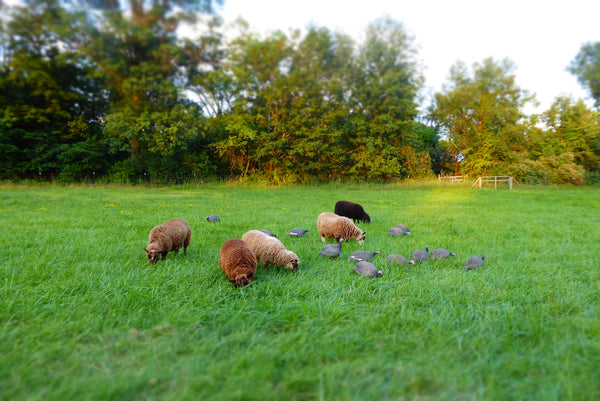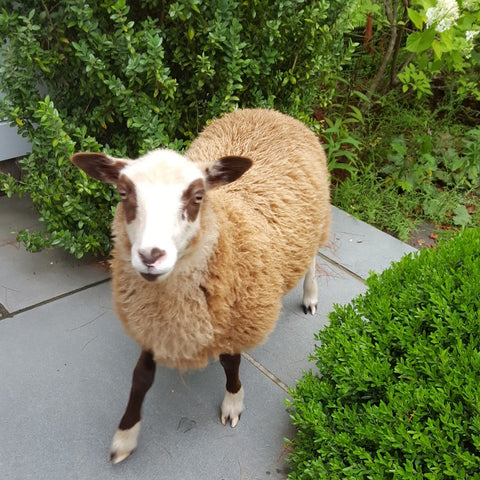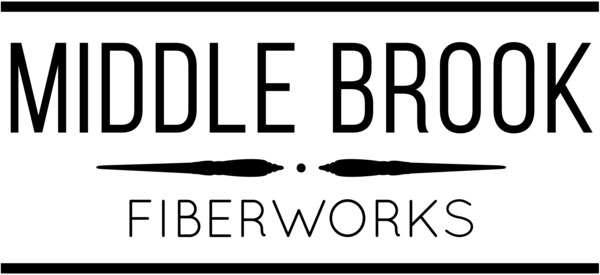The Middle Brook Flock

I raise purebred registered Shetland sheep. Shetlands are known for their hardiness, engaging personalities, and luxurious fleeces that come in a variety of colors and marking patterns. The breed is naturally healthy, and lamb easily without assistance. Their short tails don't require docking, and their petite size makes them ideal "family sheep."
The Ewes:
This is Quin, short for Harlequin. Her mother's name is Joker, and when Quin was born, her eye patches were diamond-shaped, like the classic harlequin. Quin is smerslet (mostly dark with white around the nose and neck), with yuglet (eye spots) markings. Quin is my farm's ambassador, ready to greet all visitors with a warm welcome. She thinks that everyone exists to give her pets and scritches, and well, she's not wrong.
 Quin, when she was a 2-week old baby
Quin, when she was a 2-week old baby
Roobie, short for Rooibus, is a reddish moorit (brown) with gold tips and darker roots. She has yuglet (eye spots) and sokket (socks) markings. Roobie often has a lot on her mind and doesn't hold back from letting me know what she thinks. She has very strong opinions on pumpkins (in favor), hay (the best pieces are always on the bottom and need to be dug up), and chin scratches (keep'em coming).

Moon is my finest fleeced ewe. She's not as unhinged as looks, I promise. Her body marking is katmoget, with moorit body and dark brown belly and legs. Instead of the moget face markings though, Moon has a white blaze on her forehead.

Clio is a ewe out of Quin, and she's my chameleon sheep. When she was born, she was all black with flecks of white feathering on her face and britch. By the time she was a yearling her body had lightened to light grey and her face was mottled grey. During her second year, her face turned back to black with yuglet markings around her eyes and a white patch around her nose and mouth that I've heard called by the charming name of "sugar lips." And in her third year, she lost the yuglet markings around her eyes and nose, and then the markings came back again. At shearing time, I'm always eager to see what color fleece she'll be rocking in the coming year.

Max and Astrid are twins out of Roobie. Max is a wether, and so sweet that I have some regrets about not keeping him intact. His personality is gentle and not at all pushy. The rule is to never turn your back on a Shetland boy, and while I do try to be aware of where he is if he's behind me, I'm never worried that he'll ram me. I'm not sure if he even know that he has horns! His fleece is creamy fawn with fine, even crimp.
I seem to find myself threatening Astrid that I'll put her on the truck, I swear. There isn't really a truck. But Astrid is so difficult to handle that if there were, there are days I would happily load her into it! She is neurotically high-strung, to the point that she has made the rest of my flock more skittish. She was always a suspicious lamb, and it seems that she'll never grow out of it. She startles constantly and violently, making everyone else flighty. When the dust clears and everyone else realizes there is no actual threat (again), seeing the dirty looks and side-eye the other sheep give Astrid almost makes up for what a pain she is. Astrid does love Max and Clio, and is always where they are. Maybe their good influence will rub off on her eventually.

The health and well-being of my flock is my top priority. Biosecurity measures include scrubbing my boots (and asking guests to do so too) after visiting another sheep farm, and not travelling with my sheep. To reduce the risk of skin issues, my sheep are not coated. I deworm the flock as needed, and supplement their diets with natural dewormers such as fresh pine needles and pumpkins.
My breeding goals are to produce sheep that are sound, friendly, and have fine fleeces that are consistent with breed standards. For more information about the history of the Shetland sheep in North America, check out Linda Doane's website, Maple Ridge Sheep Farm. Linda imported the first Shetland flock into the United States in 1986 and her website is a valuable resource for anyone interested in raising a fiber flock.
LAMBING 2019
The ewes were bred to Maple Ridge Seamus in January, and Lamb Watch begins on May 26. Lambs will be registered, receive veterinary well-lamb checkups, and vaccinated. They'll be weaned no earlier than 12 weeks, and visits are highly encouraged during that time to promote bonding with their new owners. If you're interested in adopting a lamb, please contact me at anne@middlebrookfiberworks.com.



